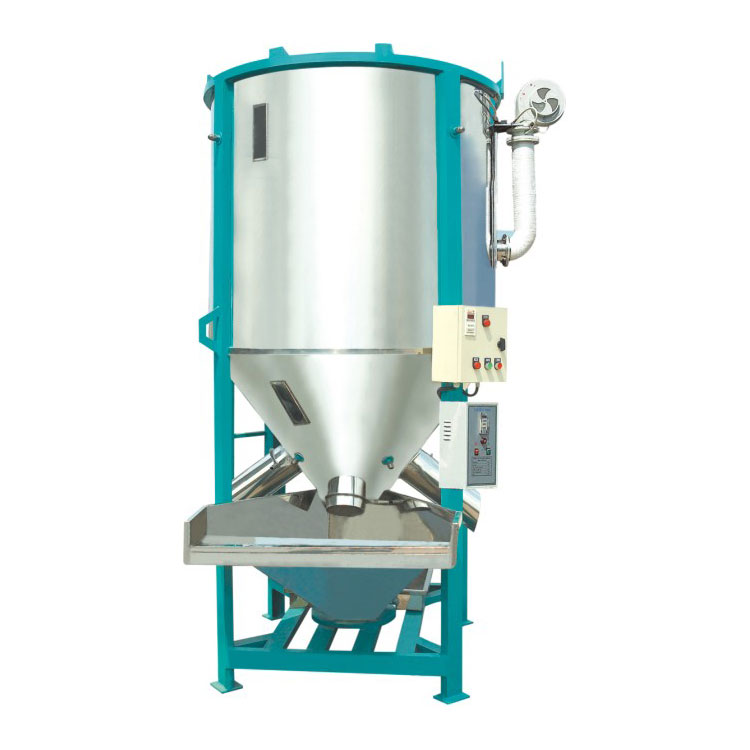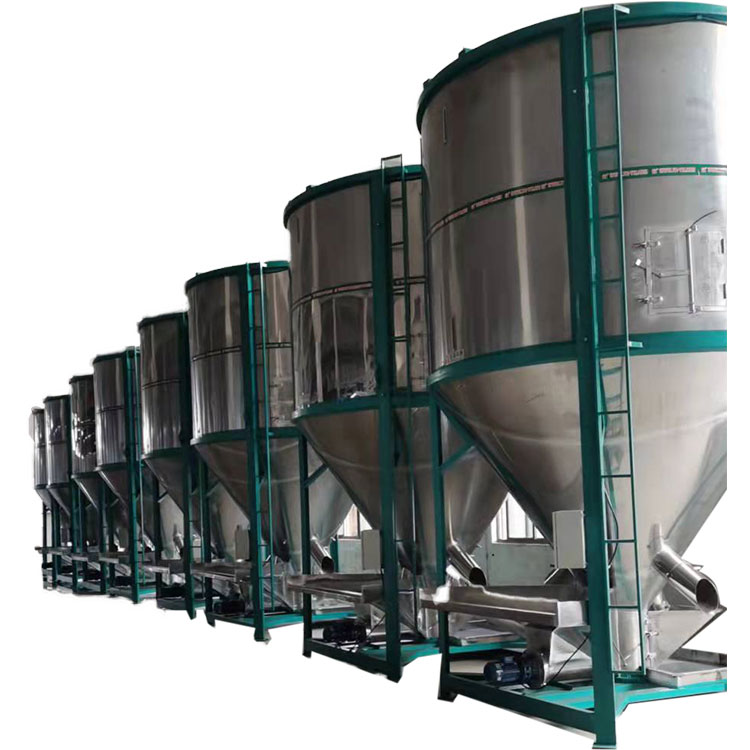
Plastics processing plants often use plastic mixers to mix different types of plastic pellets. The problem is that these pellets have different melting points, some low and some high. If not handled properly, the lower-melting-point pellets may melt and stick to the mixing chamber walls, leaving the higher-melting-point pellets unmixed. The resulting material will either be clumpy or have an uneven composition, making it unusable. So, how can we avoid the problem of some pellets melting due to heat, leaving others unmixed?

Before mixing, don't rush to pour all the pellets into the plastic mixer at once. First, sort the pellets by melting point and sort them from highest to lowest. For example, PP pellets have a melting point of approximately 160°C, PE pellets have a melting point of 130°C, and PVC pellets have a melting point of around 80°C. Mix the pellets in the order of highest melting point first and lowest melting point last. Particles with higher melting points require higher temperatures to soften. Place the particles with higher melting points first to allow them to acclimate to the temperature. Slowly raise the temperature to near their softening point before adding the particles with lower melting points. This will prevent the lower melting points from melting prematurely. Also, after sorting, consider the size of the particles. If some particles are particularly large and some are very small, it's best to slightly break up the larger particles to make them of similar size. This will ensure even heating and reduce the chance of some particles melting while others remain unresponsive.
Temperature control is the most critical step. Never raise the temperature to the target value all at once; instead, increase the temperature gradually. For example, if you're mixing PP (160°C), PE (130°C), and PVC (80°C) particles in a plastic mixer, first raise the mixer temperature to around 100°C, add the PP particles, and stir for 5-10 minutes to allow the PP particles to be evenly heated and gradually soften. Once the PP pellets are almost softened, lower the temperature to 120°C, add the PE pellets, and continue stirring for 5 minutes. The PE pellets will gradually soften, while the PP pellets, having adapted to the temperature, won't harden with the slight drop in temperature, allowing for a preliminary mixing of the two. Finally, lower the temperature to 90°C, add the PVC pellets, and stir for 10-15 minutes. This will soften the PVC pellets without melting them, ensuring a uniform mixing of the three pellets, eliminating the problem of some melted and others not.
In addition to the temperature, the speed and time of the Plastic Mixer must also be adjusted. If the speed is too fast, the pellets will easily be thrown against the chamber walls, causing the low-melting-point pellets clinging to the high-temperature chamber walls to melt. If the speed is too slow, the pellets will not be stirred, resulting in a segregated mixture with the high-melting-point pellets at the bottom and the low-melting-point pellets at the top, resulting in uneven heating. Also, the angle of the mixing blades should be adjusted. If the blades are too steep, the pellets will be carried upwards and fall to the bottom of the chamber, where the low-melting-point pellets will melt.

After mixing, quickly remove the material from the mixer. Do not leave it in the chamber. Residual heat can cause low-melting-point particles to melt and adhere to the chamber walls. These particles will then mix with the new material during the next mixing cycle, affecting the purity and uniformity of the new material. After unloading, use a scraper to scrape any remaining particles from the chamber walls while they are still warm. If there are any small amounts of melted particles, wipe them with a clean cloth dipped in alcohol. Once clean, proceed with the next mixing cycle to prevent any residue from affecting the new material.